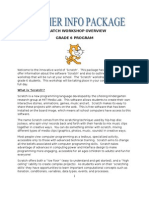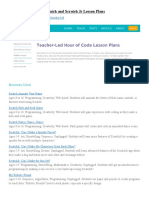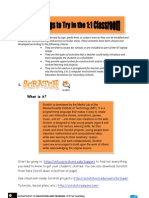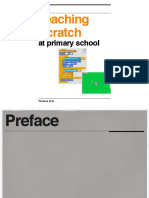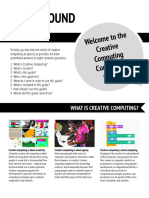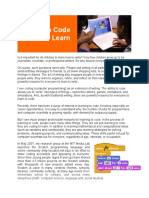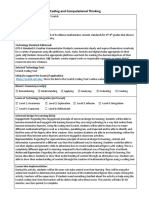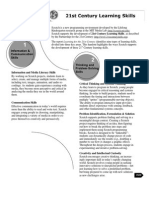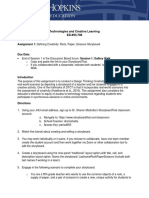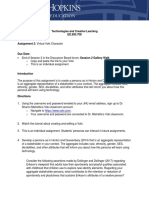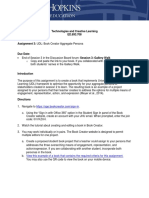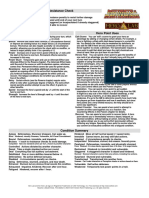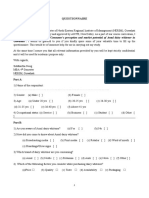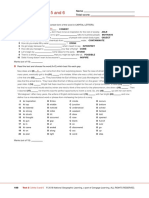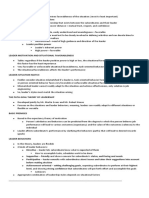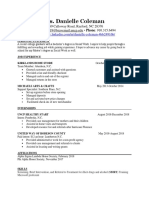0% found this document useful (0 votes)
112 views3 pagesTechnologies and Creative Learning ED.893.708.1A: The First Google Doodle in 1998
This document provides instructions for an assignment to program a Google Doodle in the Scratch platform. Students are asked to [1] join a Scratch classroom using a provided link, [2] watch tutorials on creating Google Doodles in Scratch, and [3] program their own Google Doodle by implementing at least two behaviors and sharing the link. The purpose is to gain experience in programming and exercise creative thinking skills.
Uploaded by
eric blairCopyright
© © All Rights Reserved
We take content rights seriously. If you suspect this is your content, claim it here.
Available Formats
Download as PDF, TXT or read online on Scribd
0% found this document useful (0 votes)
112 views3 pagesTechnologies and Creative Learning ED.893.708.1A: The First Google Doodle in 1998
This document provides instructions for an assignment to program a Google Doodle in the Scratch platform. Students are asked to [1] join a Scratch classroom using a provided link, [2] watch tutorials on creating Google Doodles in Scratch, and [3] program their own Google Doodle by implementing at least two behaviors and sharing the link. The purpose is to gain experience in programming and exercise creative thinking skills.
Uploaded by
eric blairCopyright
© © All Rights Reserved
We take content rights seriously. If you suspect this is your content, claim it here.
Available Formats
Download as PDF, TXT or read online on Scribd
/ 3





